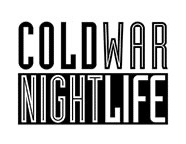 When Gary Numan first toured Canada in 1980, he stumbled across an eccentric and remarkable performer called Nash the Slash. Numan promptly ditched the support act booked for his tour and took Nash in their place. In short order, Nash was in England, signed to the Dindisc label alongside Martha and the Muffins. His output was produced by Steve Hillage and Bill Nelson, and he appeared on a Smash Hits flexi with label-mates OMD. Nash performed live with Numan at his “farewell” concert and played violin on his single, “She’s Got Claws.”
When Gary Numan first toured Canada in 1980, he stumbled across an eccentric and remarkable performer called Nash the Slash. Numan promptly ditched the support act booked for his tour and took Nash in their place. In short order, Nash was in England, signed to the Dindisc label alongside Martha and the Muffins. His output was produced by Steve Hillage and Bill Nelson, and he appeared on a Smash Hits flexi with label-mates OMD. Nash performed live with Numan at his “farewell” concert and played violin on his single, “She’s Got Claws.”
Artoffact, the Canadian industrial and electronic label, have now re-issued several Nash the Slash releases. The series starts with the first solo Nash the Slash release, Bedside Companion. A four track EP, Bedside Companion reveals Nash’s prog rock roots. The outstanding track on this release, “Blind Windows,” marks the birth of the ambient trance style that is the missing link between Steve Hillage’s solo material and the sound that he later developed for The Orb and System 7. The four songs are presented at the intended speed and 1/3 slower, reflecting the happy accident that occurred when Toronto DJ, Dave Marsden, mistook the 45 rpm 12″ for a 33 1/3 album: Nash realised that the instrumentals could be played at different speeds with equally interesting results.
Marsden’s oversight helped to inspire the release in 1981 of Decomposing, the first album designed to be played at any speed on a conventional record player. Essential for any Nash fan’s collection, and including the magnificent “Womble,” Decomposing is not part of the current Artoffact series. Instead, we have Dreams and Nightmares, the second Nash the Slash release, which collected recordings as diverse as a soundtrack to Un chien andolou and music for late night television. Essentially a compilation of tracks recorded to four-track, this is the kind of material that eccentric electronic artists recorded in their bedrooms in the 1970s and circulated on cassette tape through the Contact List for Electronic Music, but Nash was already a step ahead in releasing vinyl through his own label, Cut-Throat Records.
 A surprise is the inclusion in this series of Hammersmith Holocaust, a reproduction of one of Nash’s rarer recordings. Lifted from the sound board at a support show for Numan in 1980, it begins with “Wolf,” in which Nash uses a motif from Prokofiev, stretched and distorted over simple bass patterns. A cover of “Smoke on the Water,” rewritten as “Dopes on the Water,” plays with Deep Purple’s classic tale of jazz venue immolation. “Children of the Night,” the title track for the Hillage-produced album that would follow the show, starts with an ambient intro that signposts the template that The Orb later lift for “Blue Room.” Nash is in full stride during a cover of The Who’s “Baba O’Riley” that also strays into ambient trance territory, before a nitro-fuelled version of “Danger Zone” wraps proceedings.
A surprise is the inclusion in this series of Hammersmith Holocaust, a reproduction of one of Nash’s rarer recordings. Lifted from the sound board at a support show for Numan in 1980, it begins with “Wolf,” in which Nash uses a motif from Prokofiev, stretched and distorted over simple bass patterns. A cover of “Smoke on the Water,” rewritten as “Dopes on the Water,” plays with Deep Purple’s classic tale of jazz venue immolation. “Children of the Night,” the title track for the Hillage-produced album that would follow the show, starts with an ambient intro that signposts the template that The Orb later lift for “Blue Room.” Nash is in full stride during a cover of The Who’s “Baba O’Riley” that also strays into ambient trance territory, before a nitro-fuelled version of “Danger Zone” wraps proceedings.
Things really get interesting with the reissue of Children of the Night, Nash’s sole album for Dindisc. Recorded at Britannia Row, the London studio owned by Pink Floyd where New Order created “Blue Monday,” the album has cover artwork by Martyn Atkins, who also worked with Joy Division and Depeche Mode. In the studio, Hillage, who was getting ready to produce Simple Minds’ legendary Sons and Fascination, was supported by engineer Michael Johnson, who also worked on some of Joy Division and New Order’s best-known recordings. The result was an alternative classic, packed with essential tracks like “In a Glass Eye” and “Reactor No. 2;” but, even with the inclusion of a jukebox-friendly remake of Jan and Dean’s “Dead Man’s Curve,” the commercial success of those other artists eluded Nash, who returned to Canada and revived his Cut-Throat imprint. Always ahead of his time, his next album would feature input from the Martha and the Muffins producer, Daniel Lanois.
When Nash died in 2014 from a heart attack, the tributes were led by Gary Numan. Numan has contributed liner notes to Hammersmith Holocaust that re-tell the story of how he met Nash, as well as his feelings about working with Jeff Plewman, the man beneath the bandages. Even if Nash’s absence leaves a hole in the heart of alternative music, the material assembled in these recordings lives on.

